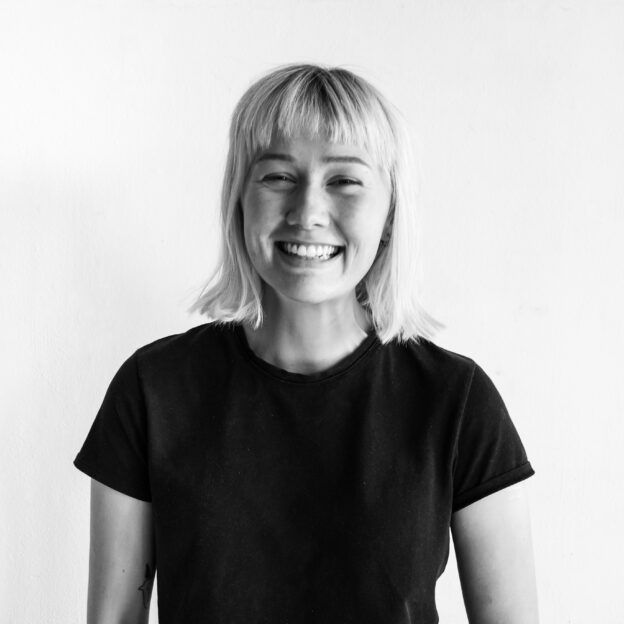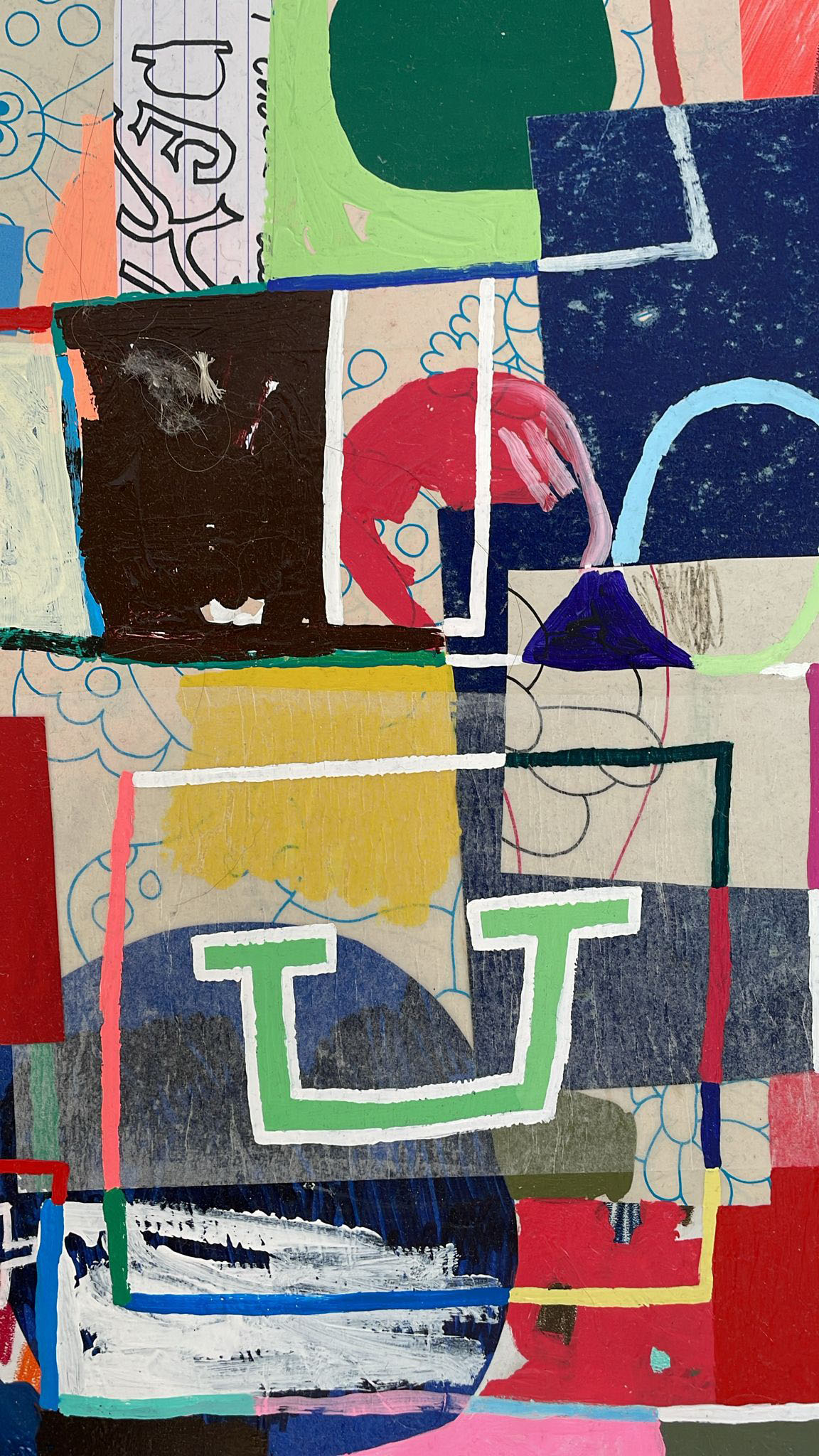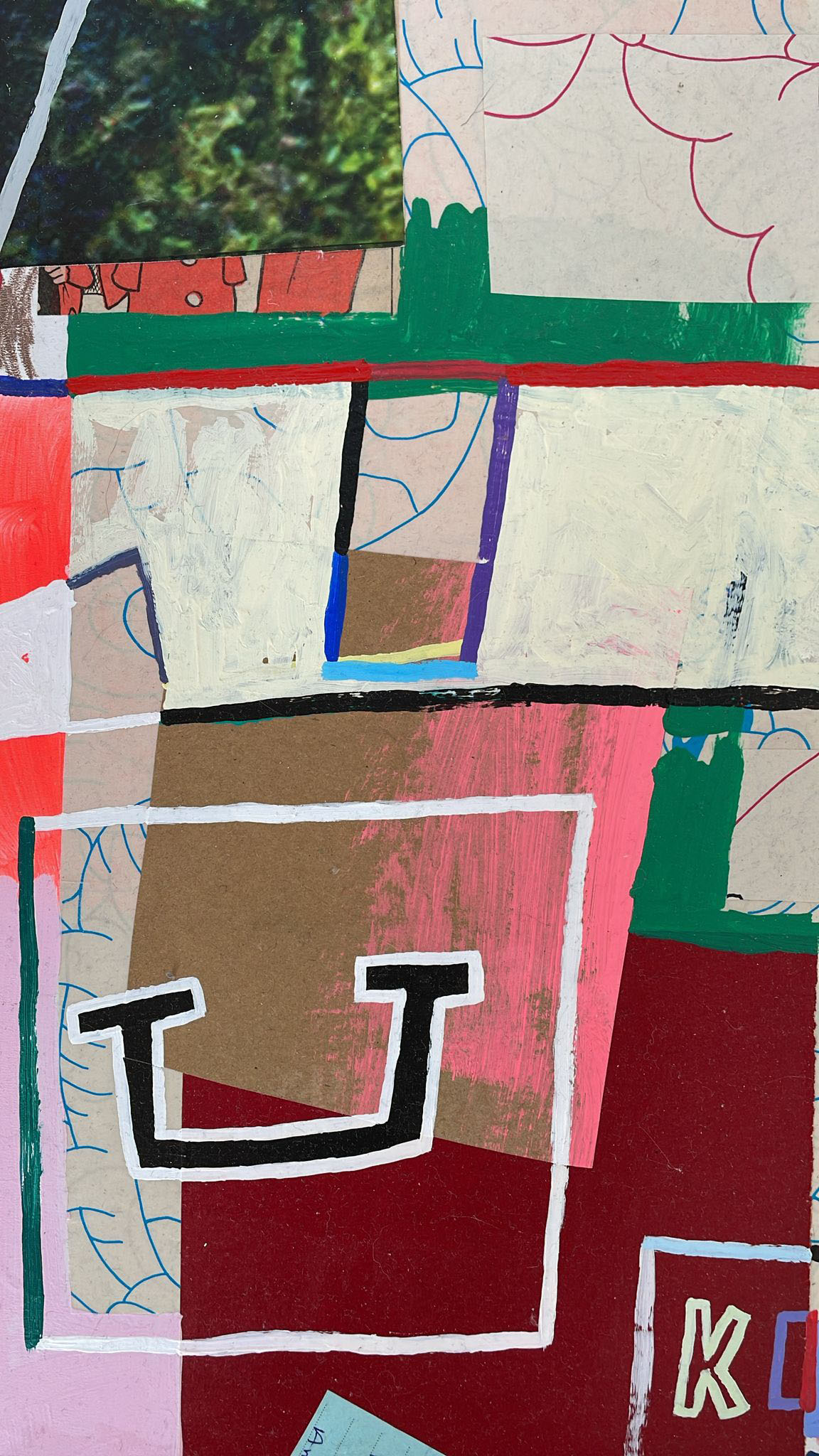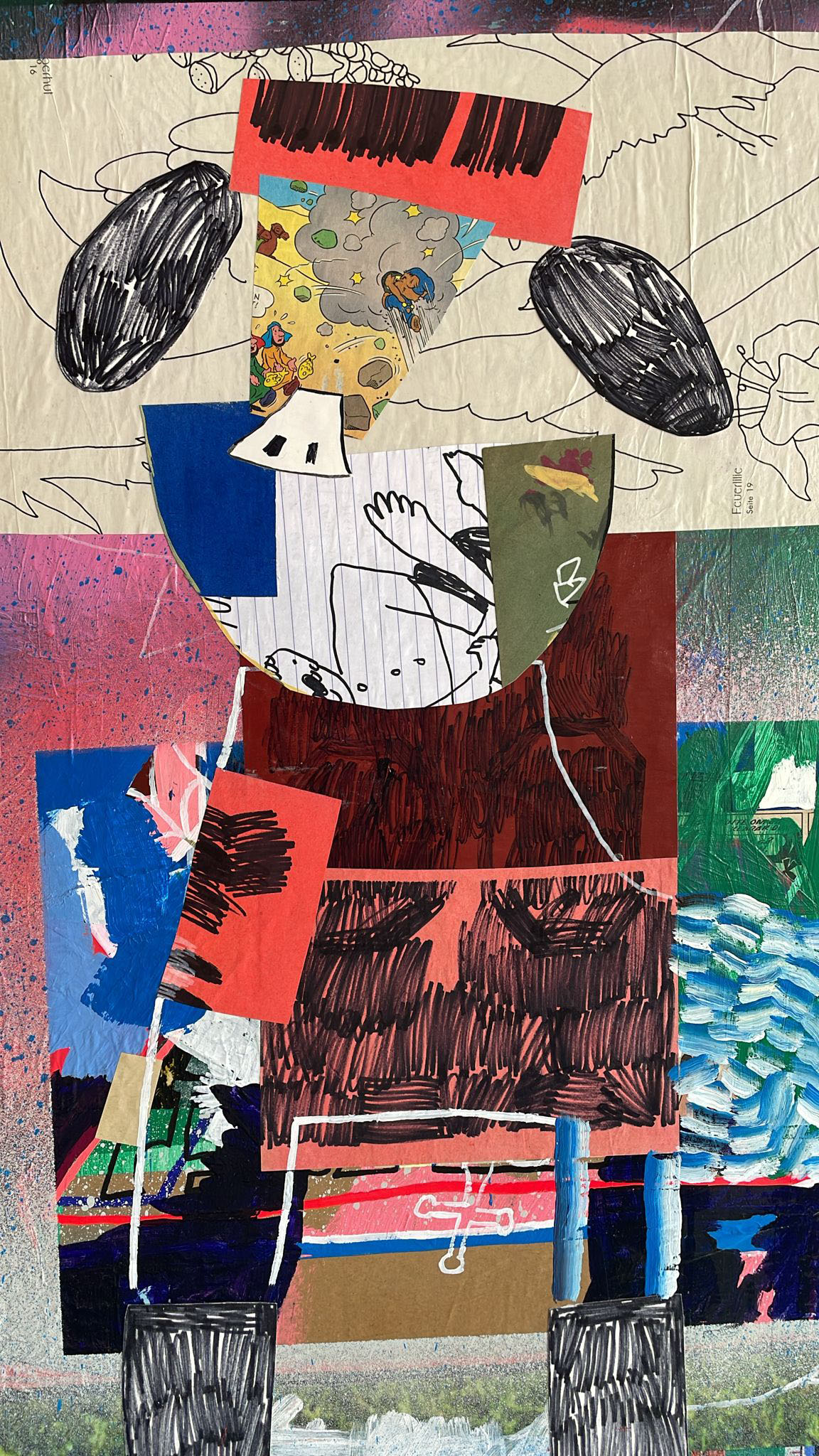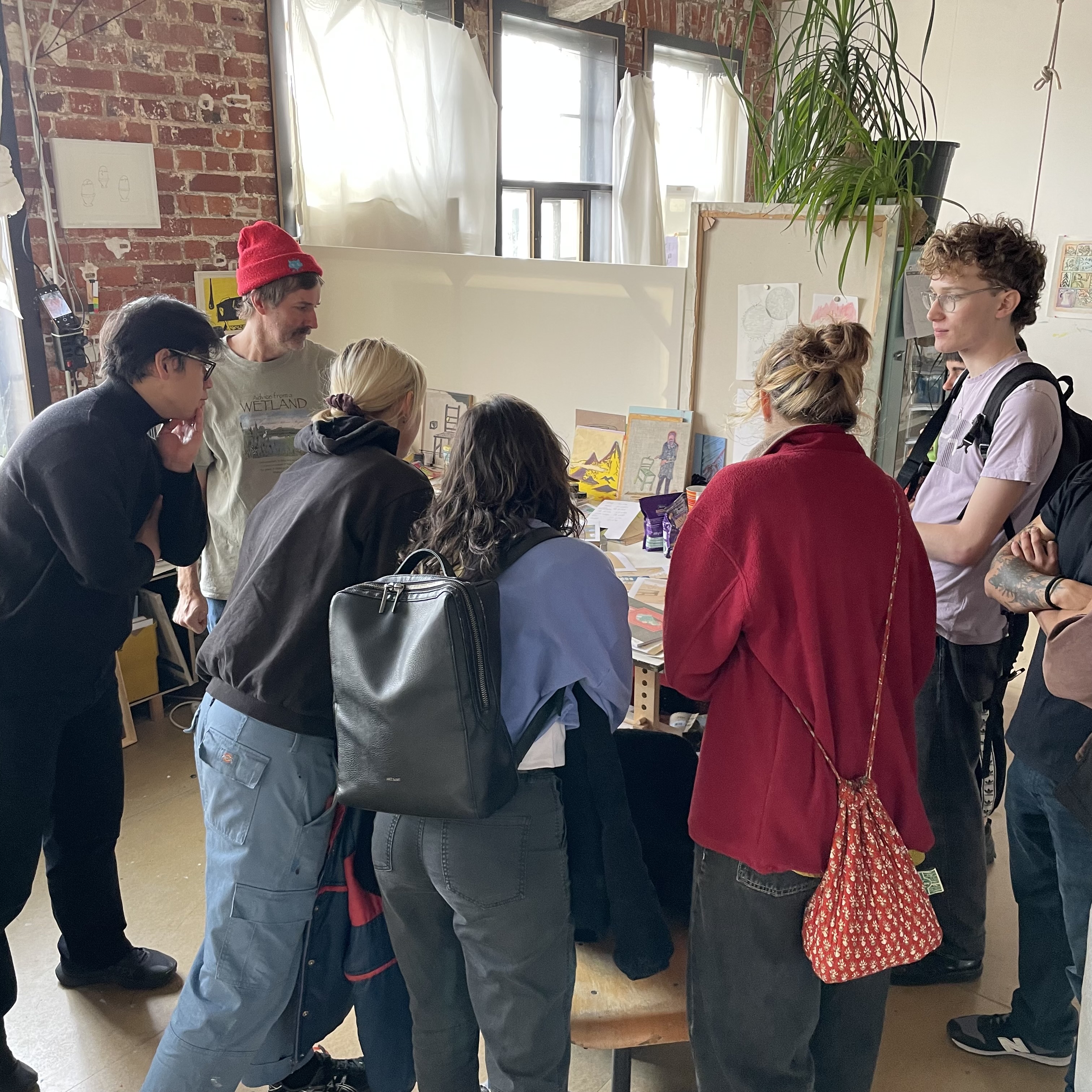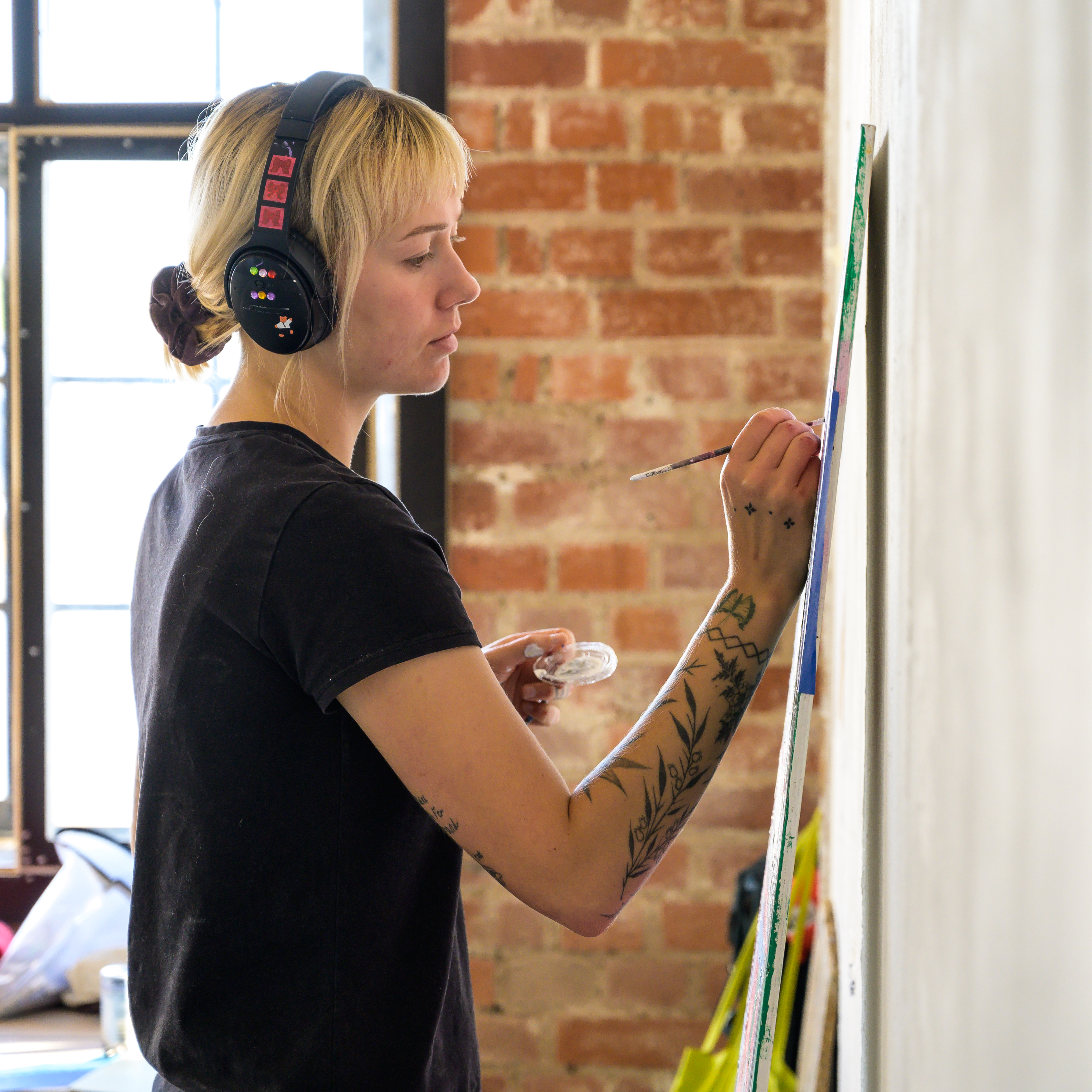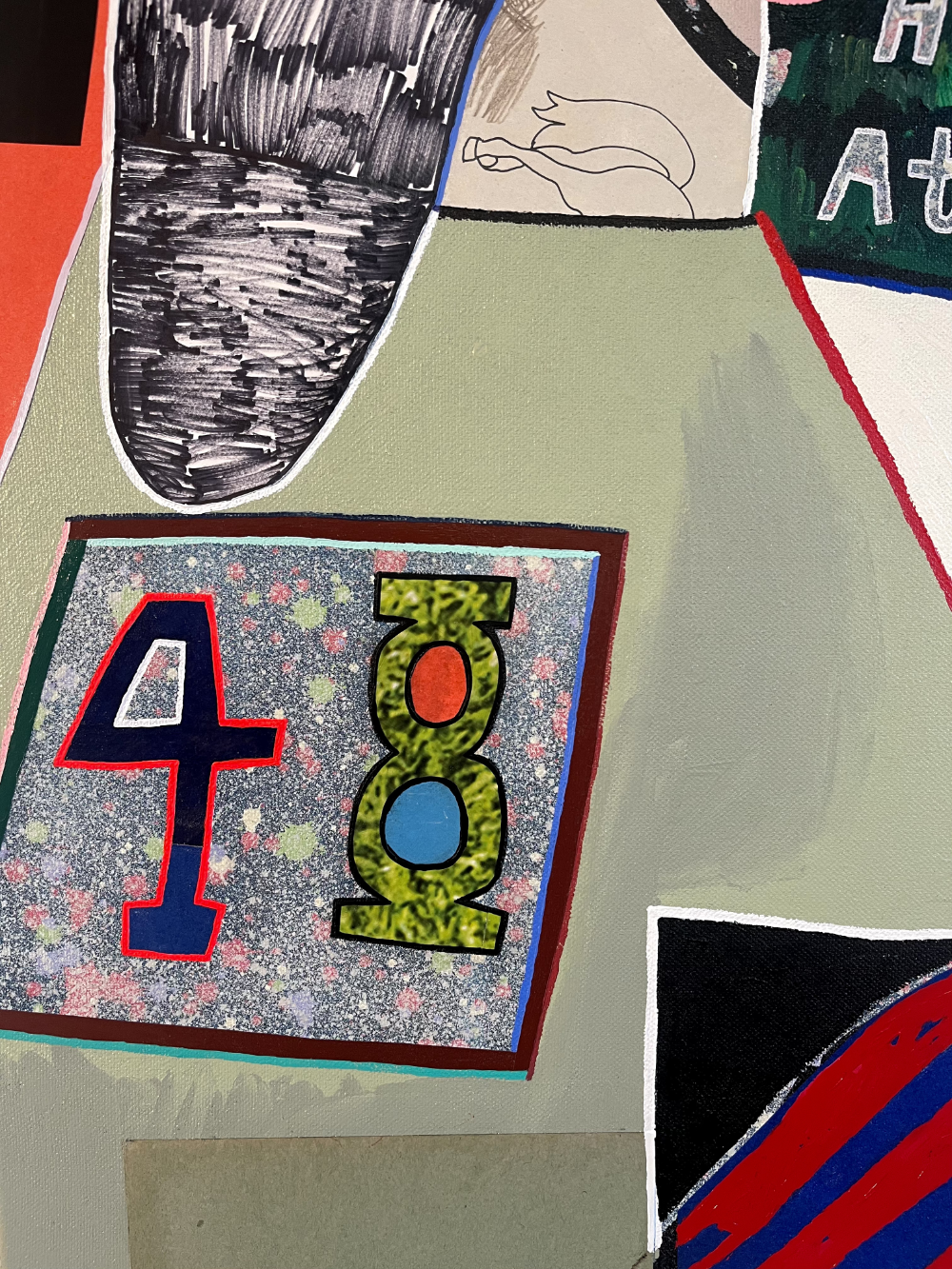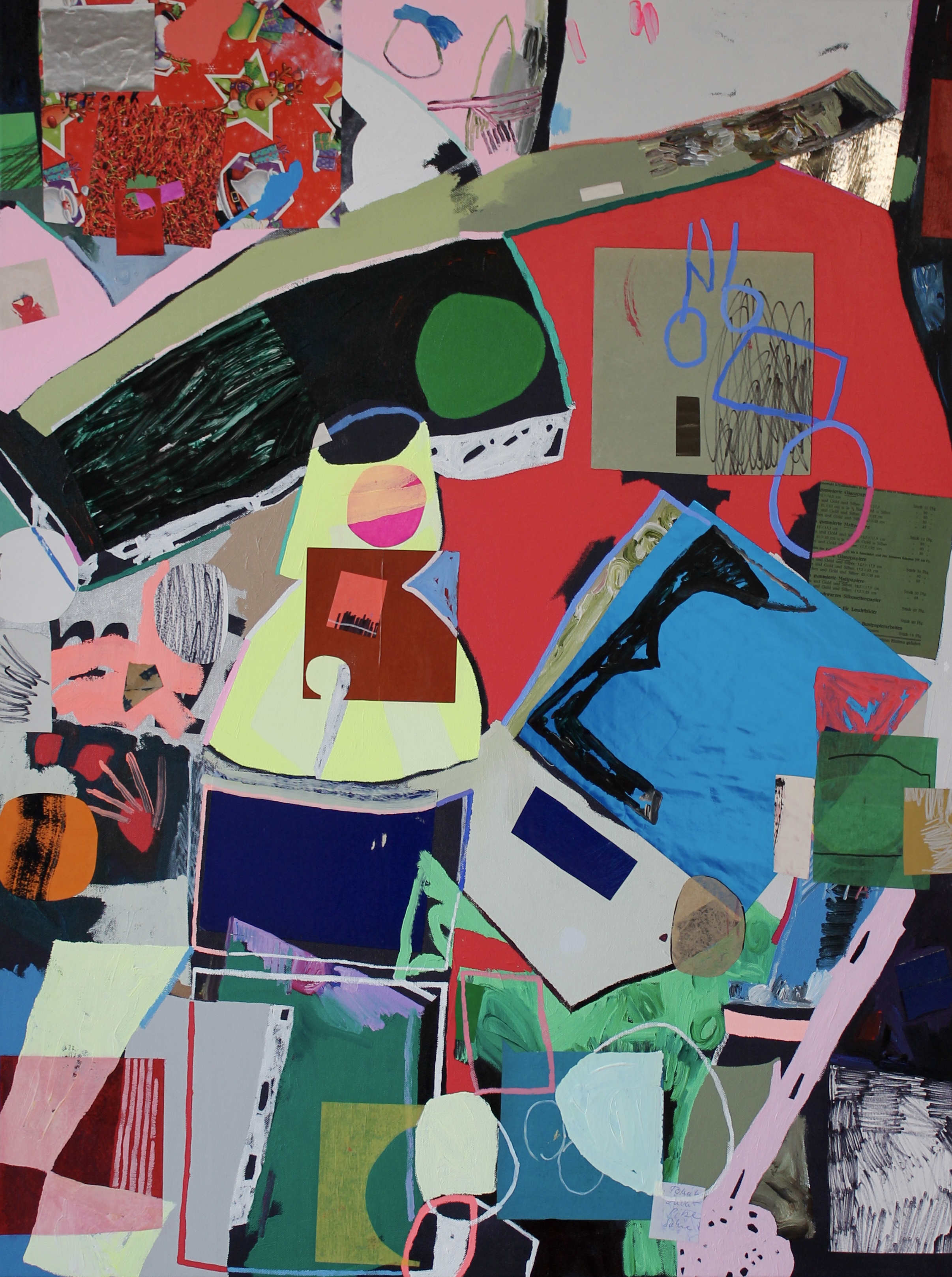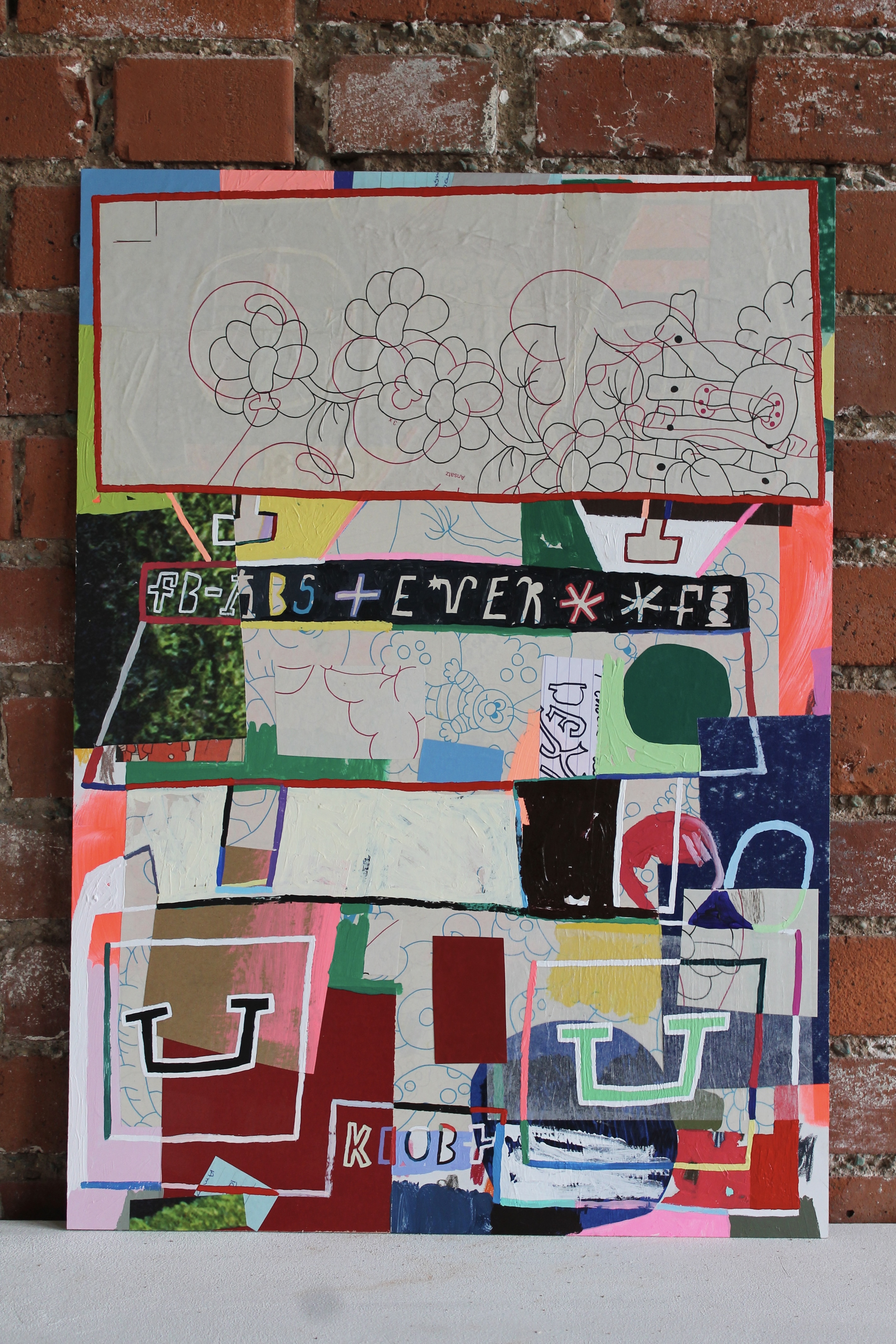Wandering through Leipzig over the past weeks, Anna Hemmerich has found herself witness to an endless dialogue between the natural and post-industrial landscapes of the city. At work, the Canadian painter and collagist becomes an interlocutor herself: her painting takes the logic of street art and saturates it to an extreme principle, layering colourful abstract forms and textures into vast, dense planes of playful intensity, where phrases, numbers, and salvaged materials emerge and disintegrate. Decisive structures of linework hold everything together in a miraculous balance.
You’ve mentioned before that a lot of your painting proceeds on an intuitive level. How much of your work do you consciously plan?
The most planning I’ll do would be like this drawing I blew up on here. [Anna gestures towards the study of a large shape that resembles impossible scaffolding or pipework.] Because I work 50% collage, 50% paint, it’s hard to say. Sometimes I’ll find some nice piece of paper that gives me an idea when I find it, and that will work itself out in the painting. It’s mostly intuitive but then sometimes I’ll find a wall I really like with a shelf on it, and then I’ll draw that maybe 15 minutes before I paint, then moving straight into the painting. But most of the time it’s a free for all.
Do you ever look back at your work and narratives and ideas emerge which you didn’t intend?
Yes, it’s funny, I used to paint and draw a lot of disfigured bodies when I was younger. Heads cut off, that kind of thing. A few years ago, I was looking back at those paintings and thought, what the fuck? I never realised I had produced those images over and over again. Obviously there’s some deeper meaning there, looking back, but I didn’t want it to be too personal. There’s something about my work that I want to keep decorative.
Decorative in comparison to what? Something narrative?
Yeah. I get annoyed when I see art sometimes—it depends. Sometimes I feel like certain paintings are trying to tell me how to feel, and I find that a little bit frustrating. Maybe it’s just me being oppositional but I want everyone to form their own opinions.
Do paintings arouse strong reactions in you?
I don’t know, I often feel very detached. Maybe it’s because I’m an emotional person outside of painting, so painting doesn’t feel very emotional. When I work, it’s more of a stable point and very cathartic, something against which my emotional life can rest. It’s the combination of physically doing it and the process of having a work on my mind. I’m fighting it out with this thing, so it becomes like a game I want to win, and I won’t stop thinking about it until I win it. Then it’s eventually a completed thing and I can move on to the next. So in that way it gives me purpose and it’s a distraction from everything else.
The forms of shelves and furniture recur in your work—do these kinds of objects hold a particular fascination for you?
Yes, I’ve always found them very aesthetically pleasing. In the past I’ve exhibited paintings stood on top of shelves I’ve made, like this. [Anna gestures towards an austere white shelf affixed to the wall, held up by two supports.] They’ve really become part of the installation, but I also think they look really nice.
You also incorporate a lot of found materials, like old cartoons and scraps of paper. How do you negotiate their role in the painting?
I’ve always loved those kinds of textures, especially the old stuff you can find anywhere on the street. When I find an interesting, torn off part of somebody’s notebook, I get really excited. There’s a lot of colour going on in my work, so including some more muted tones from the paper I find keeps it in check. Having these things which are really old, it’s like suddenly the painting is timeless.
What drew you to Leipzig?
I had a friend who lived here for a little bit and it was her favourite city in Germany. She said it’s like what Berlin used to be like 20 years ago, which I thought was interesting. You hear great things about the art community here too, there’s a lot of things going on. Also, I love all the green spaces here and it doesn’t seem so crowded, because it really isn’t so crowded.
Where you grew up also wasn’t so crowded, was it?
Yes, I grew up in a pretty small town on Vancouver Island, Canada. I got used to spending a lot of time by myself outside, which might just have been the location but also I’m kind of a hermit.
So, would you say your practice is completely solitary or do you also feel some kind of community with other artists?
Yes and I’m actually super, super grateful for it. When I was 16, I was hired as an artist assistant to one of my really good friends, Marianne, who also let me paint in her studio. At that point I was definitely not doing well in school, so she definitely pushed me in the right direction and then that opened my eyes up to all the other artists working there, and I was like, oh—it never really occurred to me that I could get away with doing this really fun thing for a living, potentially. Wouldn’t that be magical? So it inspired me a lot and I felt like I began to understand what an art community felt like, the importance of being around other artists.
Interview held by Alexander Archer, October 2024
See more of Anna Hemmerichs work here and during the upcoming events:

